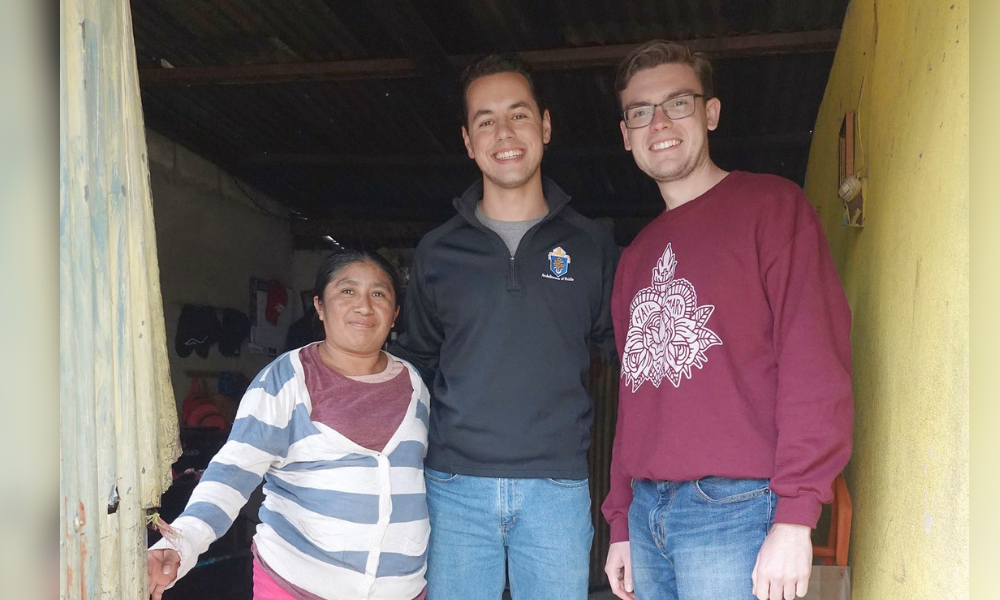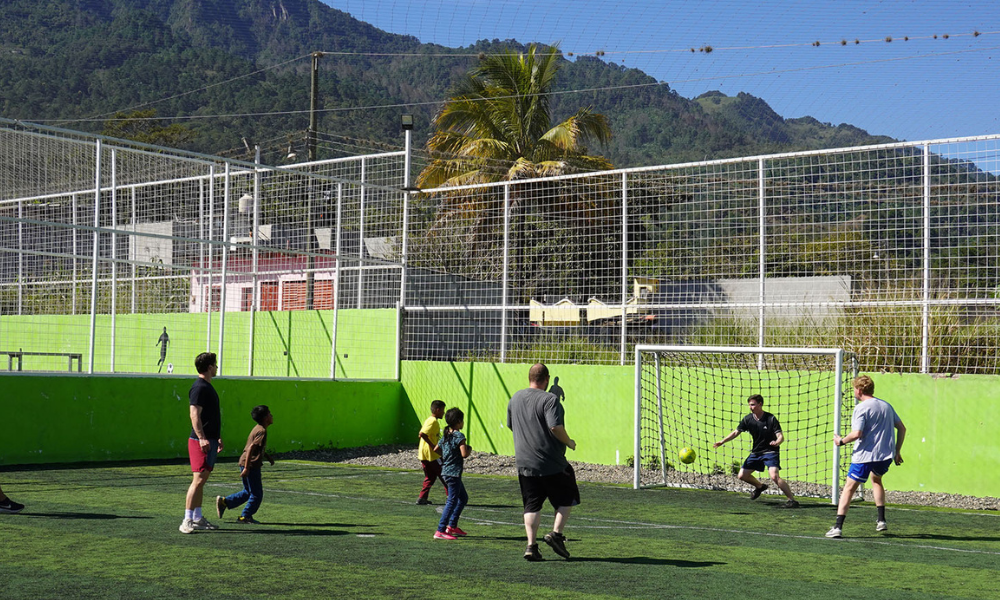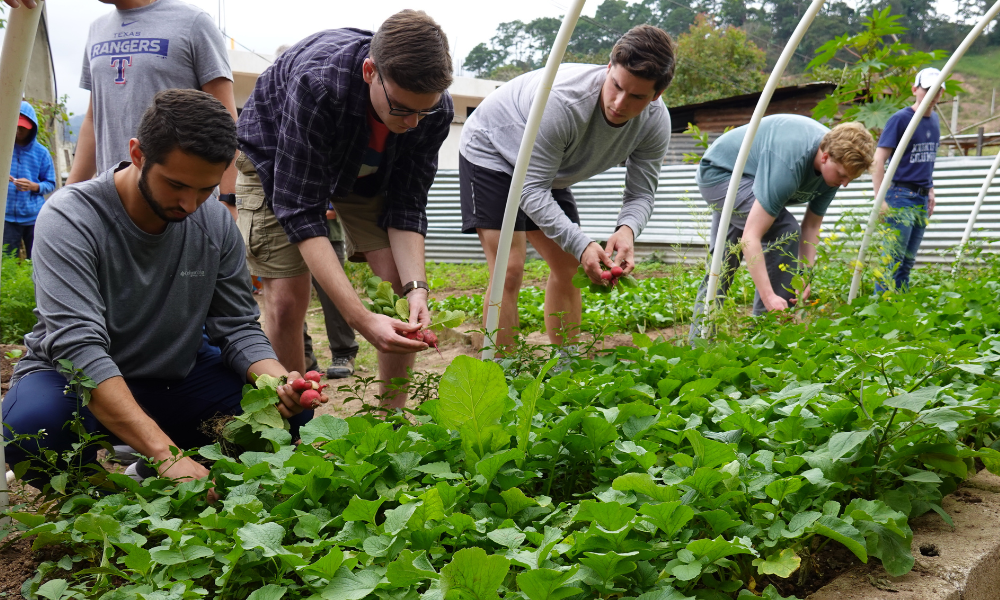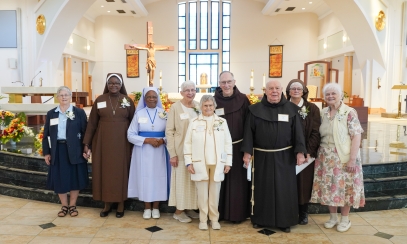
Unconditional Love
This reflection is part of an occasional series that looks at how young men today are preparing for priesthood. These young men from our local community share personal milestones and special moments from their unique journeys.
This reflection is part of an occasional series that looks at how young men today are preparing for priesthood. These young men from our local community share personal milestones and special moments from their unique journeys.
February 28, 2023 | Recently, I was blessed to go on a nine-day mission trip to Guatemala. The mission trip is sponsored by the seminary and is a required part of our senior year experience at St. Joseph Seminary College.
February 28, 2023 | Recently, I was blessed to go on a nine-day mission trip to Guatemala. The mission trip is sponsored by the seminary and is a required part of our senior year experience at St. Joseph Seminary College.
We spent the trip living in a small village in the mountains just outside the city of Esquipulas, which has close connections to the St. Joseph Abbey and Seminary here in Louisiana. In the center of Esquipulas is the Basilica del Cristo Negro, which houses a miraculous crucifix that dates back to the sixteenth century. The dark color of the corpus (body) of Jesus on the cross is where the image gets its name, “El Cristo Negro.”
In the late 1950s, the archbishop of Guatemala was looking for a religious order who could care for the basilica and its ministry to the millions of pilgrims who visit each year. Through a seminarian at St. Joseph’s who was familiar with the basilica, word reached Abbot Columban Thuis in Louisiana, and in 1959, a group of monks from St. Joseph’s Abbey founded the Abbey of Jesus Christ Crucified in Esquipulas, which to this day cares for the basilica and ministers to the pilgrims who come to venerate the miraculous image from all over Central America.
Most of our week however, was spent in a village on the outskirts of Esquipulas called Santa Ana. The ten of us on the trip stayed in a house in Santa Ana right alongside the people we were ministering to. On the first morning we were there, we were split into pairs and distributed bread and milk to some children in the village who otherwise might not have eaten breakfast. We were then encouraged, in our pairs, to take them home and visit with their families. When my friend and I arrived at the house, we were taken aback by what it was: a shack built of mud, plywood, and sheets of metal. There was no privacy, no running water, no lights, and no floor.
My friend and I were more taken aback however, by what happened next: the grandmother, who was the owner of the home, brought us inside, asked us to sit down on the only two chairs she had, and offered to feed us with the only food she had, which had been prepared for her family.
She then proceeded to tell us all about her family and how blessed she was, despite the fact that neither my friend nor I are fluent in Spanish. That hospitality continued to be shown to us throughout the rest of the week by everyone that we visited. It was the greatest takeaway I had during the trip: despite the fact that they live in total material poverty, they are not poor at all. The people we met were filled with more love and more generosity than I have ever encountered here at home, because they gave from what little they had, even risking going hungry to welcome me and my friend, outsiders who didn’t speak the language and have lived lives completely different from their own. That unconditional love is a reflection of the love that Christ has for us, always giving, until there is nothing left to give.
We spent the rest of the week working in the village. We planted crops and harvested crops, installed lights in homes that had no lights and water filters in homes that had no clean water. This is a major problem in Santa Ana. The village is considered a private housing project and so it receives no municipal support. The lack of support from the city leaves their community without many essential resources, and so they depend a lot on the generosity of other communities or organizations, such as ours who bring what we can to help. We were also fortunate enough to spend a day working at a migrant house close to the monastery which houses migrants from across Central and South America making their way to other parts of the world to achieve a better life.
While we did a lot of good works for the community, the greatest part of the trip was my interaction with the people. The people we got to meet will leave a lasting impact on us.
While we continue through this season of Lent, we should ask ourselves, “In what ways am I giving back to my neighbors?” Almsgiving is a popular Lenten practice, and a discipline mandated by Christ and later encouraged by the Church Fathers. Many times, we equate almsgiving with simply giving money, but almsgiving stretches much further than your wallet. Regardless of your financial ability to give to the poor, all of us have the ability to reach out to those around us who are suffering and struggling through life. That was a takeaway from Guatemala for me: mission is not limited to third-world countries, but rather all of us have a mission field in which we can find Christ each day in those who are hurting, broken, or hungering for peace and fulfillment in their life. Ask yourself today where those people are in your life and how can you reach out to them, so that they might come to know that their peace and fulfillment will be found, not in material wealth or opportunity, but only in Jesus Christ.
Vincent Washburn, photographed during a nine-day mission trip to Guatemala. Courtesy photos.
Vincent Washburn is a seminarian of the Diocese of St. Petersburg from St. Michael the Archangel Parish in Hudson Fl. He graduated from Fivay High School in 2016. After attending Pasco-Hernando State College, he transferred to the University of South Florida, Tampa in 2018 and graduated in May 2020 with a degree in Psychology. He is second year of Pre-Theology studies at student St. Joseph Seminary in St. Benedict, Louisiana.







